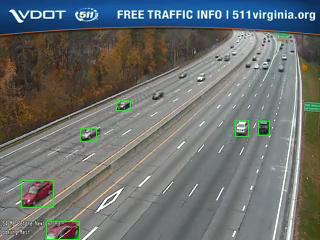Exploring Image-Based Classification to Detect Vehicle Make and Model
Project Title
Exploring Image-Based Classification to Detect Vehicle Make and Model
University
Old Dominion
Principal Investigator
Khan Iftekharuddin, Ph.D.
Professor of Electrical Engineering and Director of the Vision Lab, Old Dominion University
Chung-Hao Chen, Ph.D.
Assistant Professor of Electrical Engineering, Old Dominion University
PI Contact Information
Funding Sources and Amounts Provided
US Department of Transportation — $40,000
Old Dominion University — $40,000
Total Project Cost
$80,000
Agency ID or Contract Number
DTRT12GUTC17; KLK900-SB-001
Start Date
5/1/12
End Date
12/31/13
Description of Research Project
The scientific and technical objectives of this work include:
- Effective data collection for efficient vehicle identification in dynamic environments, and
- Advanced image analysis for vehicle segmentation and recognition to obtain vehicle type and model information in a traffic stream.
Implementation of Research Outcomes
The project has five steps for successful completion:
- Database of archive traffic video for analysis – Capture video and categorize by time of day, day/night, traffic conditions, and weather conditions. Organize data into a searchable database. The traffic database is collected via a UNIX script to automate the capture process (Implemented).
- Segmentation of vehicles from background – Development of an algorithm for determining the vehicles as foreground from the remainder of the background scene. Segmentation is based on an adaptive mixture of Gaussians algorithm with improvements using SIFT/SURF feature tracking techniques (Implemented, with improvements in progress).
- Classification of vehicles – Classification should occur at two levels. General classification of vehicles by the following categories: sedan, passenger truck/SUV, motorcycle, bus, small commercial truck, and large commercial truck. In order to differentiate between these categories, we use multi-class support vector machine (SVM) classifier. The classifier shows an average accuracy of about 74%. Because of the poor quality of the input video and small size of the segmented vehicles, the classifier offers a poor classification rate between SUV cars and small commercial trucks. Based on our literature survey, we plan to investigate additional features such as histogram of gradient and gray level co-occurrence matrix to improve the performance of the classifier.
In addition, since the real-time VDOT dataset is at a very low resolution, we are working on a super-resolution technique with maximum stochastic restoration to improve the resolution of the segmented car which is expected to improve the true classification rate of the classifier (Implemented, with improvements in progress). - Integration of separate modules into final real-time application capable of handling streaming video input (next step).
- Communication with EPA MOVES application in order to form emissions estimate (next step).

Example of detected vehicle, as indicated by the green boundary, captured within a region of interest.
Impacts and Benefits of the Project
Providing a real traffic video SQL database that can be used for future research and study. It will cover day and night time, light and dense traffic, different weather conditions and traffic environments such as highways and tunnels.
Vehicle segmentation based on adaptive mixture of Gaussians model that allows for robust performance. The technique is robust to sudden lighting changes and intermittent motion in the background (such as swaying branches or rain).
Paper
- Yousef, A., Iftekharuddin, K., Karim, M., Toward aerosols LiDAR scattering plots clustering and analysis. Proc. SPIE 8718, Advanced Environmental, Chemical, and Biological Sensing Technologies X, 87180F (May 31, 2013), DOI:10.1117/12.2015807.
- A. H. Yousef, J. B. Flora, K. M. Iftekharuddin, "Highway traffic segmentation using super-resolution and Gaussian mixture model", Proceedings of SPIE Vol. 8855, 88550G (2013).
Web Links
Final Report: ODU - Image Based Vehicle Classification_Final2013
Keywords
- sustainable transportation
- emissions estimation
- advanced traveler information systems
- intelligent transportation system
- computer vision
- machine learning
- video detection
- image processing






